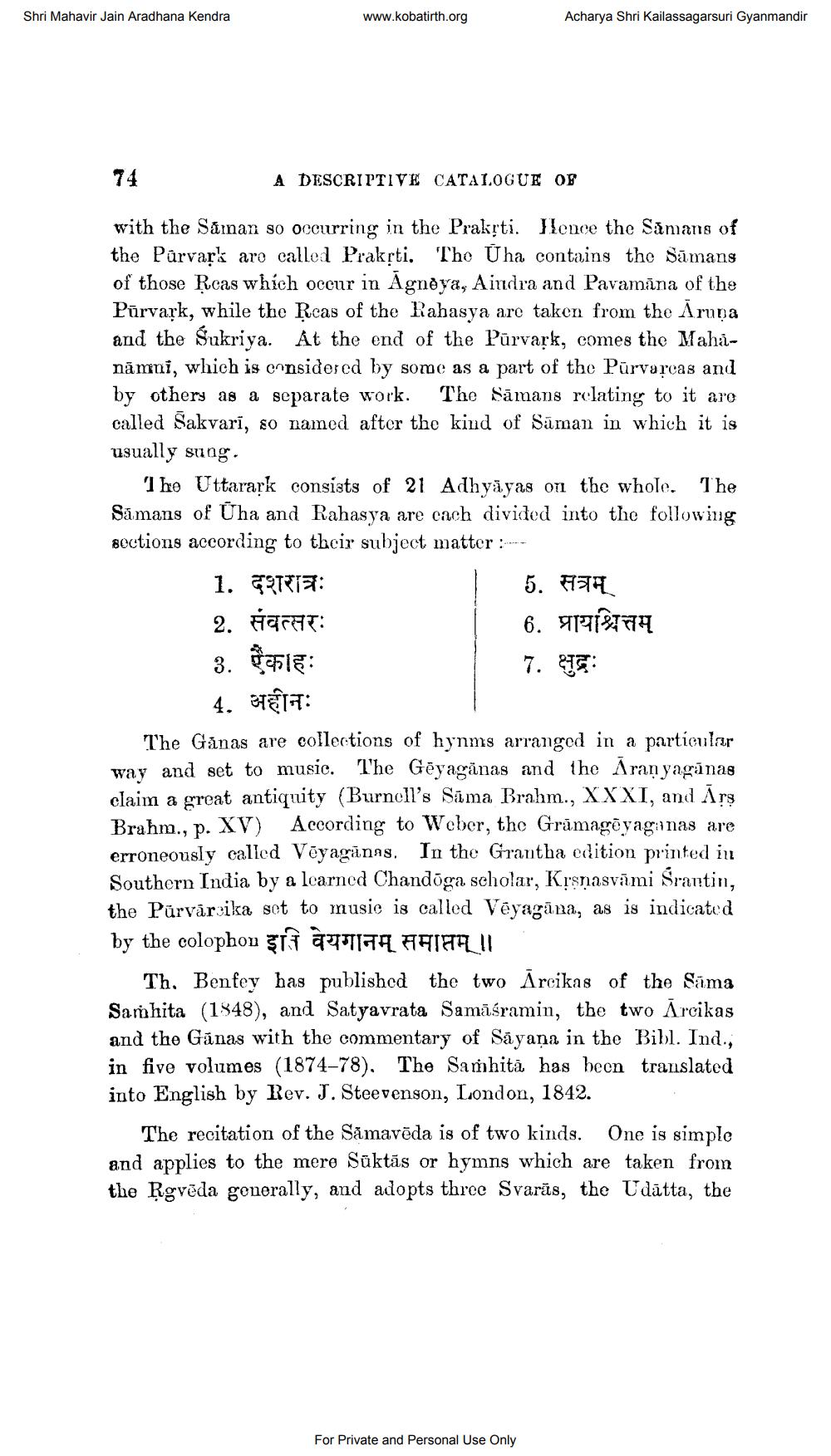________________
Shri Mahavir Jain Aradhana Kendra
www.kobatirth.org
Acharya Shri Kailassagarsuri Gyanmandir
74
A DESCRIPTIVE CATALOGUE OF
with the Sáman so occurring in the Praksti. Hence the Samans of the Púrvark are called Prakrti. The Ūha contains the Sāmans of those Reas which occur in Agndya. Aindra and Pavamāna of the Pūrvark, while the Reas of the Rahasya are taken from the Ārupa and the Sukriya. At the end of the Pūrvark, comes the Mahanāmi, which is considered by some as a part of the Pūrvareas and by others as a separate work. The Sāmans relating to it aro called Sakvarī, so named after the kind of Sūman in which it is usually sung.
The Uttarark consists of 21 Adhyāyas on the whole. The Símans of Ūha and Rahasya are cach divided into the following soctions according to their subject matter :1. 977157
5. H 2. Harat:
6. 91787777 3. 15:
7. 85 4. 1 : The Ganas are collections of hynms arranged in a particular way and set to music. The Gēyagānas and the Aranyagānas claim a great antiquity (Burnell's Sāma Brahm., XXXI, and Ārs Brahm., p. XV) According to Weber, the Grāmagoyaginas are erroneously called Voyagānas. In the Grantha edition printed in Southern India by a learned Chandöga scholar, Krsnasvāmi Srautin, the Pūrvārsika set to music is called Vėyagāna, as is indicated by the colophou grk QYTTA AHIFAL!
Th. Benfey has published the two Ārcikas of the Sāma Samhita (1848), and Satyavrata Samāśramin, the two Ārcikas and the Gānas with the commentary of Sāyaṇa in the Bibl. Ind., in five volumes (1874–78), The Samhitā has been translated into English by Rev. J. Steevenson, London, 1842.
The recitation of the Sảmavēda is of two kinds. One is simple and applies to the mere Sūktās or hymns which are taken from the Rgvēda generally, and adopts threc Svarīs, the Udātta, the
For Private and Personal Use Only




